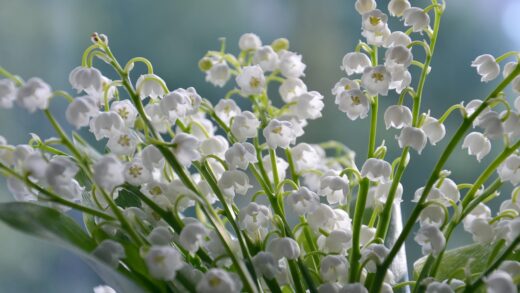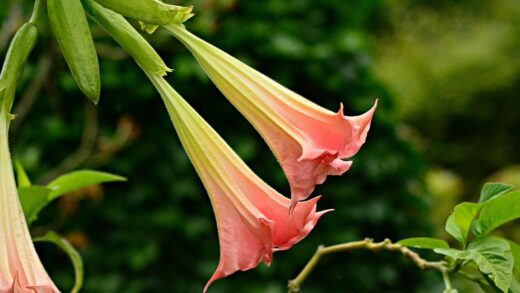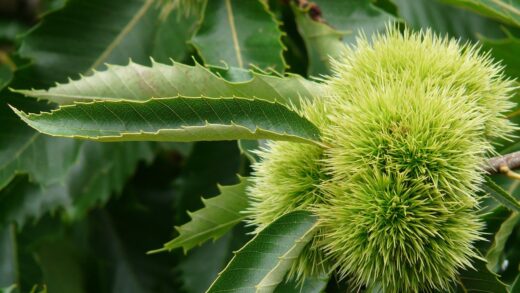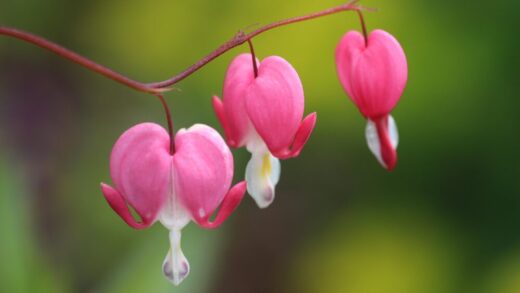The successful establishment of dusty miller in any garden setting begins with proper planting techniques and an understanding of its propagation methods. This striking foliage plant, renowned for its silvery-white, felted leaves, provides a brilliant contrast to green and flowering plants, making it a favorite for edgings, borders, and container arrangements. Whether starting from nursery-grown seedlings or propagating your own plants from cuttings or seeds, following a few key principles is essential. Ensuring the plant has the right foundation from the very beginning will lead to a season full of vigorous growth and stunning visual appeal, rewarding the gardener’s efforts with a resilient and beautiful display.
Careful site preparation is the cornerstone of successful planting. Dusty miller is native to Mediterranean climates, which means it is inherently adapted to thrive in conditions of high light and low water. Therefore, the chosen planting location must receive a minimum of six to eight hours of direct sunlight per day. Insufficient light will not only result in leggy, unattractive growth but will also cause the foliage to lose its characteristic silver hue, reverting to a less desirable greenish-gray. The soil must be exceptionally well-draining, as the plant is highly susceptible to root rot in heavy, waterlogged soils.
Before placing the plants in the ground, it is crucial to properly acclimate them to the outdoor environment, a process known as hardening off. This is especially important for young plants started indoors from seed or purchased from a greenhouse. Over a period of seven to ten days, gradually expose the seedlings to increasing amounts of direct sunlight and outdoor temperatures. This gradual introduction prevents shock, which can stunt growth or even kill the tender plants. Begin by placing them in a sheltered, shady spot for a few hours a day and slowly increase the duration and intensity of exposure.
When you are ready to plant, dig a hole that is slightly wider and the same depth as the root ball of the plant. Gently remove the plant from its container, being careful not to damage the delicate roots. If the plant is root-bound, with roots circling tightly at the bottom of the pot, gently tease them apart to encourage them to grow outwards into the surrounding soil. Place the plant in the hole, ensuring that the top of the root ball is level with the soil surface. Backfill the hole with soil, gently firming it around the base of the plant to eliminate any air pockets.
After planting, water the dusty miller thoroughly to help settle the soil and provide moisture to the roots. While the plant is drought-tolerant once established, it requires consistent moisture during its initial establishment phase to develop a strong root system. Provide adequate spacing between plants, typically six to twelve inches apart, depending on the specific cultivar’s mature size. This spacing ensures good air circulation, which is vital for preventing fungal diseases, and allows each plant enough room to grow into a full, bushy mound without being overcrowded.
More articles on this topic
Propagating from seeds
Propagating dusty miller from seed is a cost-effective and rewarding method for producing a large number of plants. The ideal time to start seeds is approximately six to ten weeks before the last expected frost date in your region. This timing ensures that the seedlings will be a suitable size for transplanting into the garden once the weather has warmed sufficiently. Using a sterile seed-starting mix is highly recommended to prevent damping-off disease, a common fungal issue that can be fatal to young seedlings. Fill your seed trays or small pots with this mix, lightly firming it down.
Dusty miller seeds are quite small and require light to germinate, so they should not be buried deep in the soil. Sow the seeds by sprinkling them evenly over the surface of the prepared seed-starting mix. After sowing, gently press the seeds onto the surface to ensure good contact with the soil, but do not cover them with additional mix. You can lightly mist the surface with water to moisten it. To maintain the necessary humidity for germination, cover the seed tray with a clear plastic dome or a piece of plastic wrap.
Place the covered tray in a warm location that receives bright, indirect light. A consistent temperature of around 21 to 24 degrees Celsius is optimal for germination, which typically occurs within ten to fourteen days. During this period, it is important to monitor the moisture level of the soil, ensuring it remains consistently moist but not waterlogged. As soon as the seedlings emerge, remove the plastic cover to improve air circulation and prevent fungal growth. Move the tray to a location where the seedlings will receive plenty of direct light, such as a south-facing windowsill or under fluorescent grow lights.
Once the seedlings have developed their first set of true leaves, they can be thinned out to prevent overcrowding, leaving the strongest seedling in each pot or cell. When the seedlings have grown to about two to three inches in height and have several sets of leaves, they are ready to be hardened off and transplanted into their final garden location. This methodical approach from seed to garden-ready plant ensures that you will have healthy, robust specimens ready to thrive outdoors.
More articles on this topic
Propagating from cuttings
Propagation from cuttings is another highly effective method for creating new dusty miller plants, with the significant advantage of producing exact clones of the parent plant. This is particularly useful if you have a specific cultivar with desirable characteristics that you wish to replicate. The best time to take cuttings is during the late spring or early summer when the plant is in a state of active growth. This ensures that the stems have enough vigor to successfully develop new roots. Look for healthy, non-flowering stems to use for your cuttings.
Using a clean, sharp knife or pruning shears, take four- to six-inch stem tip cuttings from the parent plant. Make the cut just below a leaf node, which is the point on the stem where a leaf emerges, as this is where rooting hormones are most concentrated. Carefully strip the leaves from the bottom half of the cutting, leaving only a few leaves at the very top. This reduction in foliage minimizes water loss through transpiration and directs the cutting’s energy towards root production rather than supporting a large number of leaves.
While not strictly necessary, dipping the cut end of the stem into a rooting hormone powder can significantly increase the success rate and speed of root development. Tap off any excess powder before planting. Prepare a pot or tray with a well-draining rooting medium, such as a mix of perlite and peat moss or coarse sand. Insert the bottom half of the cutting into the medium, ensuring that the stripped leaf nodes are buried. Gently firm the medium around the stem to hold it in place.
To create a humid environment conducive to rooting, you can cover the pot with a plastic bag or place it in a propagator. Position the cuttings in a location that receives bright, indirect light and maintain a consistent temperature. Keep the rooting medium moist but not soggy. Roots typically begin to form within three to four weeks. You can check for rooting by gently tugging on the cutting; if you feel resistance, roots have likely formed. Once a healthy root system has developed, the new plant can be transplanted into a larger pot or its permanent spot in the garden.
Preparing the planting site
Thorough preparation of the planting site is a non-negotiable step that directly impacts the future health and vitality of dusty miller. Begin by selecting a location that aligns with the plant’s fundamental need for abundant sunlight. An area that is free from the shadows of buildings, trees, or other large plants is ideal. Proper light exposure is the primary driver for the development of the plant’s signature silvery-white foliage, and compromising on this will invariably lead to suboptimal results. The site should be open and allow for good air movement around the plants.
Once you have identified the sunniest spot, turn your attention to the soil. Dusty miller’s intolerance for “wet feet” means that soil drainage is of paramount importance. To assess your soil’s drainage, you can perform a simple percolation test. Dig a hole about a foot deep and fill it with water; if the water has not drained away within a few hours, your soil has poor drainage and will need to be amended. Heavy clay soils are the most common culprits and must be improved before planting.
To amend heavy soil, you will need to incorporate materials that create air pockets and allow water to pass through more freely. Generously work several inches of organic matter, such as compost or aged pine bark, into the top eight to twelve inches of the soil. In addition to organic matter, adding inorganic materials like coarse sand, perlite, or small gravel can make a significant difference in improving the soil’s structure and drainage capacity. The goal is to create a loose, friable soil texture that will not become compacted over time.
For areas that are chronically wet or have intractable clay soil, building a raised bed is an excellent solution. A raised bed elevates the growing medium above the problematic native soil, giving you complete control over its composition. You can fill the raised bed with a high-quality, well-draining soil mix specifically formulated for plants with these requirements. This ensures that the dusty miller’s root system will always be in an environment with optimal drainage, regardless of the underlying soil conditions, setting the stage for a healthy and thriving plant.
Transplanting seedlings
The process of transplanting dusty miller seedlings from their starter trays to the garden requires a gentle touch and careful timing to minimize stress on the young plants. The ideal time to transplant is after all danger of frost has passed and the soil has had a chance to warm up. Transplanting on an overcast day or in the late afternoon is preferable, as this reduces the immediate stress from intense sun and heat, giving the plants a chance to settle in during the cooler evening and night hours. Ensure the seedlings are well-watered an hour or two before you plan to move them.
When preparing to move a seedling, handle it by its leaves or root ball rather than the delicate stem, which can be easily bruised or broken. Use a small trowel or a spoon to carefully lift the seedling, along with the soil surrounding its roots, from the seed tray. This helps to keep the root system as intact as possible. If the seedlings were grown in individual peat pots or soil blocks, the entire unit can be planted directly into the ground, which further minimizes root disturbance and transplant shock.
Dig a hole in the prepared garden bed that is just large enough to accommodate the seedling’s root ball. The depth should be such that the seedling will sit at the same level in the ground as it did in its container. Placing it too deep can lead to stem rot, while planting it too high can expose the roots and cause them to dry out. Gently place the root ball into the hole and backfill with the surrounding soil, lightly pressing the soil down to ensure good contact with the roots.
Immediately after transplanting, water the seedlings thoroughly at their base. This initial watering is crucial for settling the soil, eliminating air pockets, and providing the roots with the moisture they need to begin establishing themselves in their new home. For the first week or two after transplanting, monitor the soil moisture carefully and water as needed to keep the soil consistently moist but not saturated. This period of adjustment is critical for the long-term success of the plants.


















